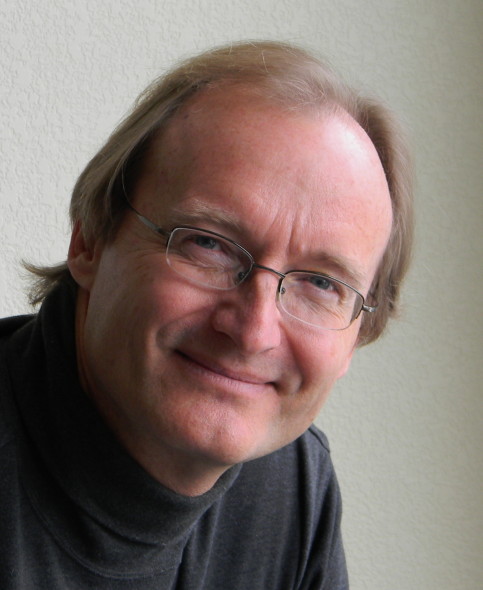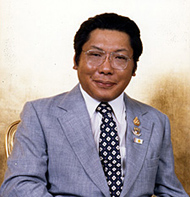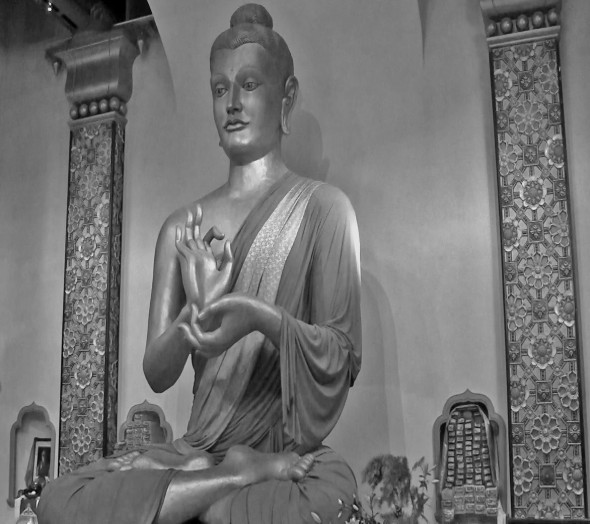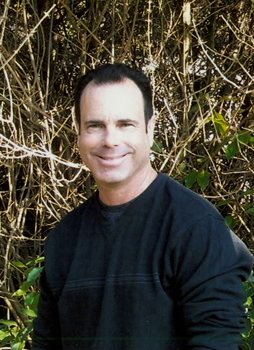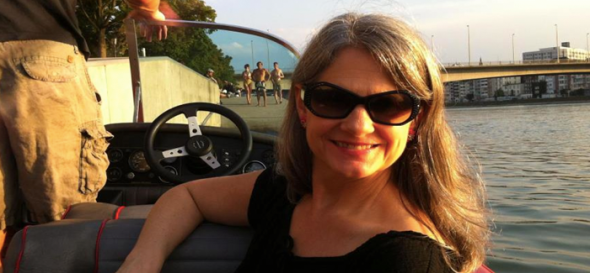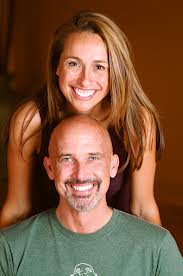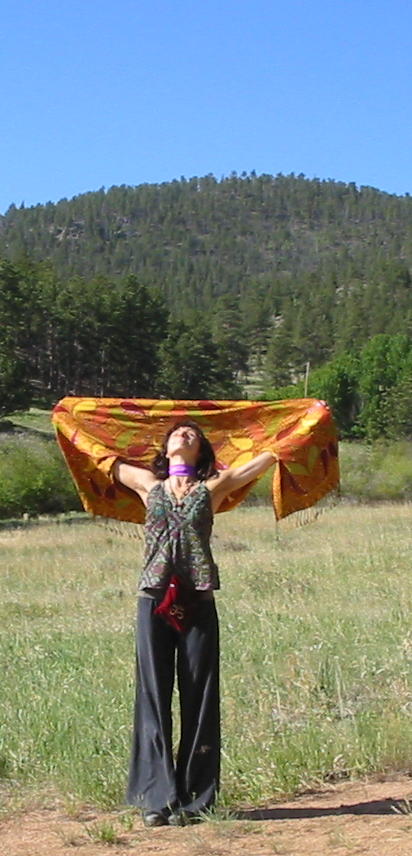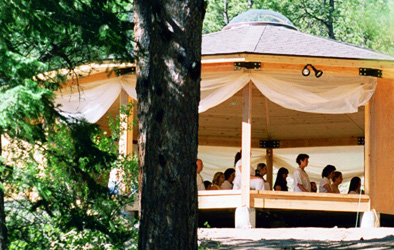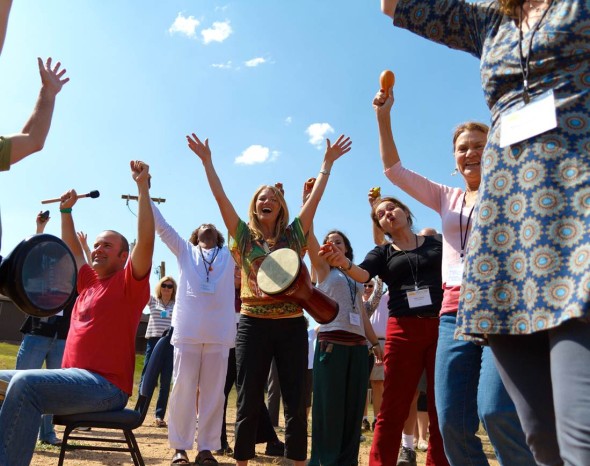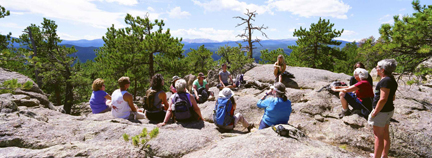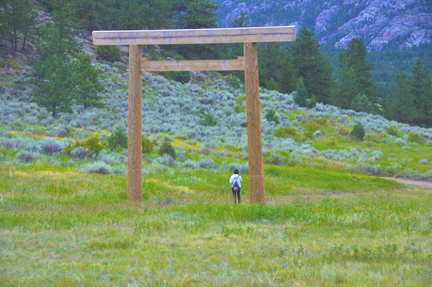By Cynthia MacKay
Cynthia MacKay will be leading a retreat at SMC from August 30-September 2 based on Sakyong Mipham’s book ,“Running with the Mind of Meditation: Lessons for Training the Body and the Mind.” Geared for runners, walkers and athletes, this program will offer fresh insights into the activities of meditation and movement. All levels of runners and walkers welcome.
 In my neighborhood, there’s The Corn Guy, The Lady With the Boxers, The Couple Who Live in the Victorian and The Korean Grocer. I am The Lady Who Runs. My neighborhood in east LA is called Lincoln Heights. It sits in the shadow of Dodger Stadium, just north of Downtown. People don’t think of Los Angeles as a good place to hill train, run trails and stay off the paved streets but Lincoln Heights is just that. I can run in any of the four directions and have a very different feeling from each run.
In my neighborhood, there’s The Corn Guy, The Lady With the Boxers, The Couple Who Live in the Victorian and The Korean Grocer. I am The Lady Who Runs. My neighborhood in east LA is called Lincoln Heights. It sits in the shadow of Dodger Stadium, just north of Downtown. People don’t think of Los Angeles as a good place to hill train, run trails and stay off the paved streets but Lincoln Heights is just that. I can run in any of the four directions and have a very different feeling from each run.
North
On Saturdays, I head north. Saturdays are my long runs and from my house I can get 18 plus miles in on both paved and dirt trails. I have to run through my neighborhood for about 1 1/2 miles to get to the LA River Bike Trail. Once on the Bike Trail, it’s a flat, long, traffic-free 7 1/2 miles to Burbank.
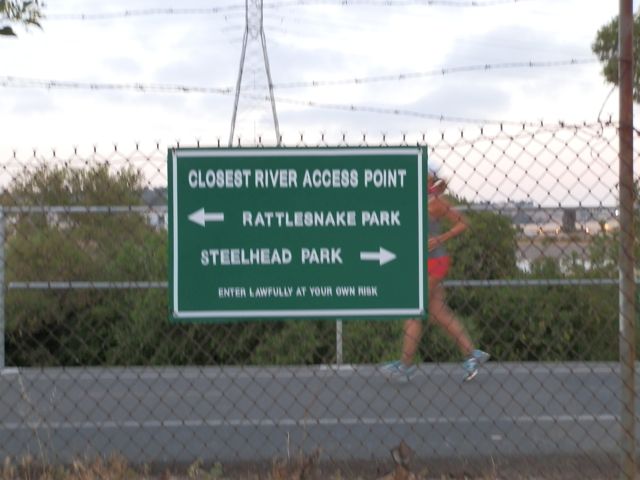
There are rare sections of the LA River that are not encased in concrete. A 3 1/2 mile stretch along the Bike Trail is filled with beautiful greenery and a myriad of birds. Families can be seen fishing and wading in the river. The bike trail runs smack next to the busy 5 freeway, so on one side is incredible greenery and the other side cars are whizzing by.
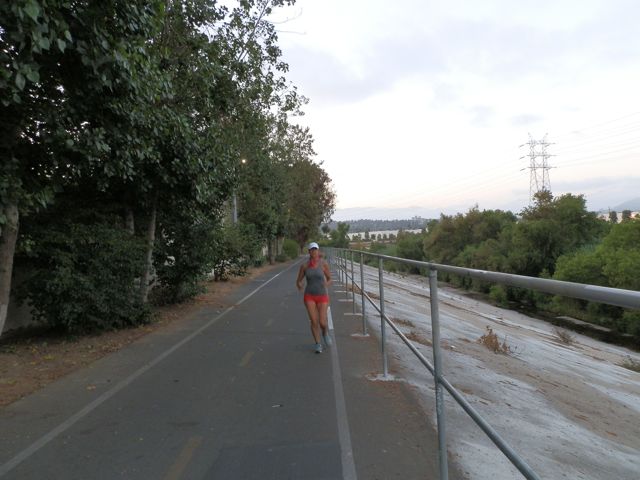
There are several bridges going over and under into Griffith Park, where there are over 4,300 acres of parkland and trails.
South
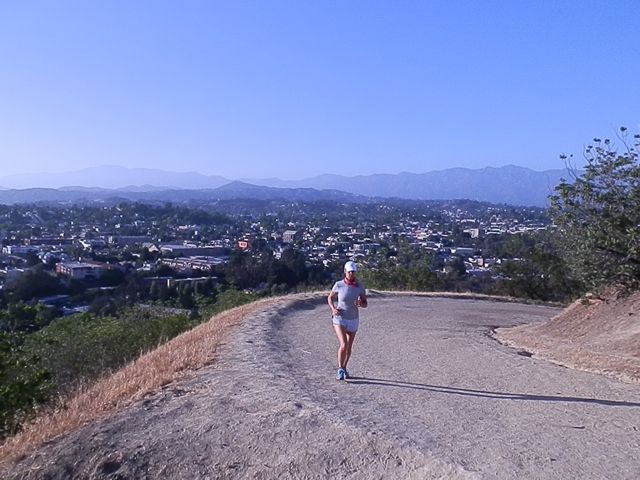
Wednesdays are my hill runs and for that I go south. Ernest E. Debs Regional Park is a small city park, only about 300 acres, with an Audobon Center near the bottom. There are several extreme hills that I slog up and down. The view from the top goes all the way out to the ocean over the downtown skyline in one direction and the valleys leading up to the heaving San Gabriel Mountains in another direction.
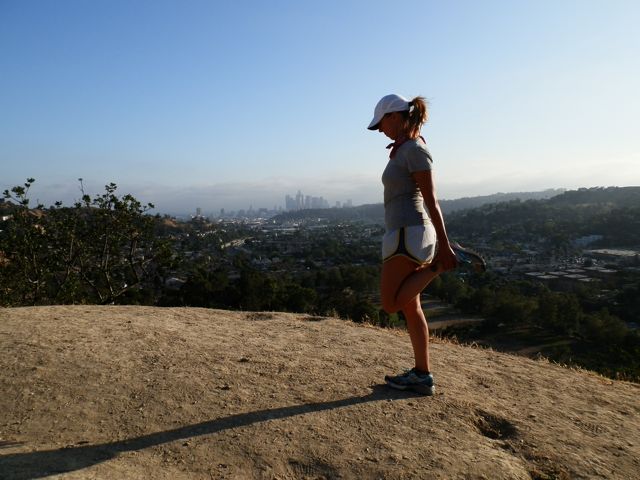
Once at the top, it’s a short run to a pond where people may be fishing, ducks may be swimming or dogs lapping at the shore. Snails climb the skinny spindly weeds and hang there in the breeze waiting for the next rain.
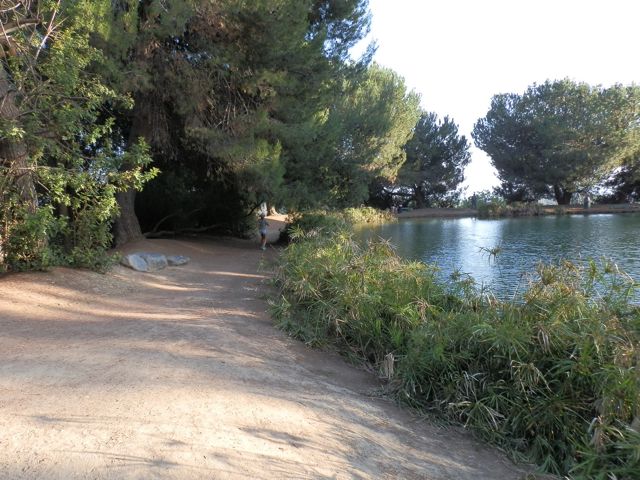
From the pond, it’s a steep downhill on the other side with views of the valley floor south with its endless rows of houses and small hills.
East
I go east on Mondays. I descend into a small tributary of the LA River that comes from the east and handles runoff from the San Gabriels. It’s encased in concrete up until the Rose Bowl where it opens to dirt rivers and shaded ponds. A paved trail runs right next to the small stream of flowing water. After about 3 miles, the small river trail ends at a horse stable with chickens running around and a huge fig tree stocked with delicious fruits in September. I pick up a small dirt trail around a golf course, this and the all white horse running in the corral, are my favorite parts of this run.
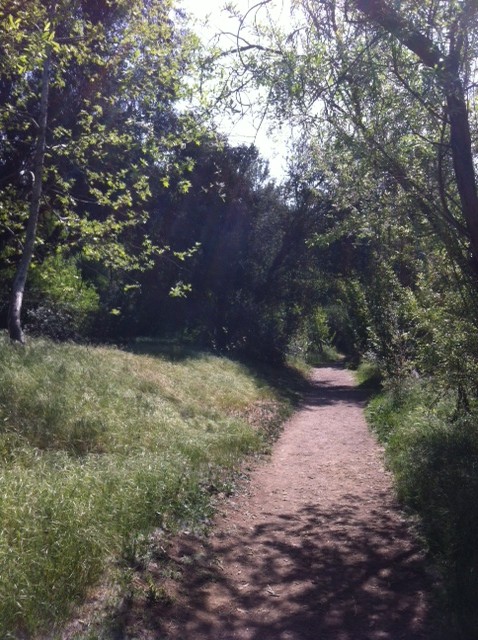
It’s a single person trail and perfectly rolling so that I can speed up but still have to be mindful of my footing. It’s engulfed in trees so it’s very cool and quiet on a summer morning.
There is a tunnel under the 110 freeway that I call “the bardo.” It’s dark and the sandy earth is loose, so I can’t tell what I’m running on. I raise my gaze to the light at the end and trust that I will remain upright and relaxed. A tinge of fear mixes with confidence as I exit the tunnel and head towards the Rose Bowl in the Arroyo Seco. The Arroyo Seco boasts an archery range, a bass casting pond, another horse stable and several flocks of wild parrots who make a noisy ruckus among the archers and horses.
West
On Tuesdays, I go west. It’s a high dose of both urban and natural beauty. I’ve discovered a stairwell that goes up into the 110 freeway, the first freeway built in the west. There was originally a walkway that has now been sectioned off with fencing and barriers but the stairwell leads into the old walkway.
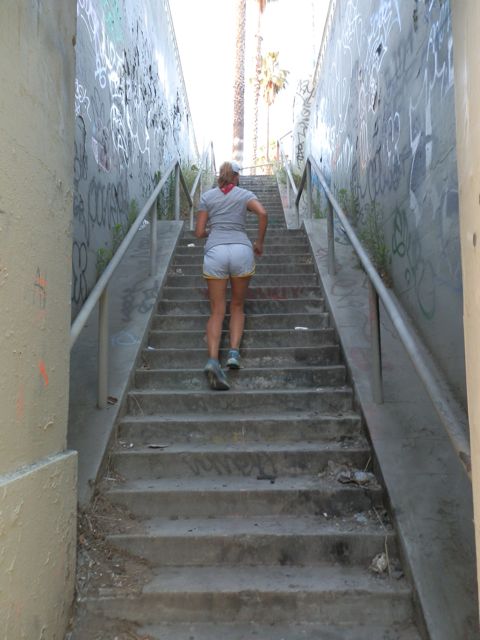
I run smack next to the cars on the busy 110. It’s a mash of freeways, bridges going over bridges, over freeways and over the LA River. Train tracks run through the whole mess and everything is covered in graffiti. There is something about it that grips a buzzing energy for me–it’s gritty, real and completely alive to all my senses.
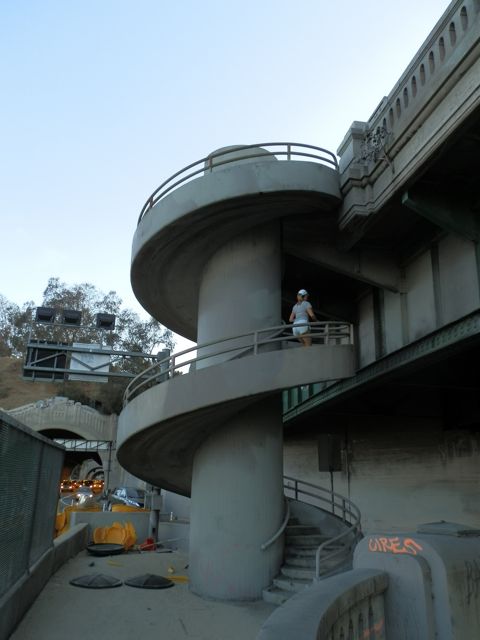
The stairwell exits into Elysian Park, home of Dodger Stadium and the Police Academy. Up a few hills and into trails, I head up a steep dirt track that turns east.
On some days I hear the patter of many feet as I come out of one trail to cross to another. Coming down the hill will be the in-line, strong formation of police cadets in training, running these hills in unison in perfect time with perfect posture. They greet me one by one with “good morning ma’am.” It’s very sweet.
I turn to head home through some more dirt trails and across the historic Broadway Bridge, once again crossing the incredible pulsing artery of our city, the LA River.
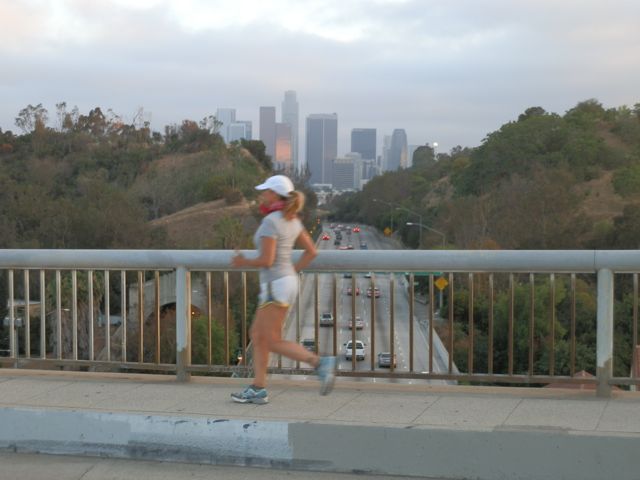
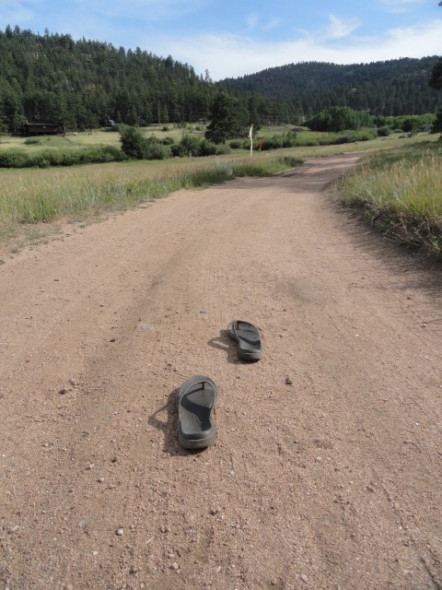 One of the biggest problems in death, as in life, is looking back, or being held back by unhealthy attachments. By cutting our attachments and lightening our load now (by writing wills and other advance directives), we can free ourselves to move forward.
One of the biggest problems in death, as in life, is looking back, or being held back by unhealthy attachments. By cutting our attachments and lightening our load now (by writing wills and other advance directives), we can free ourselves to move forward.